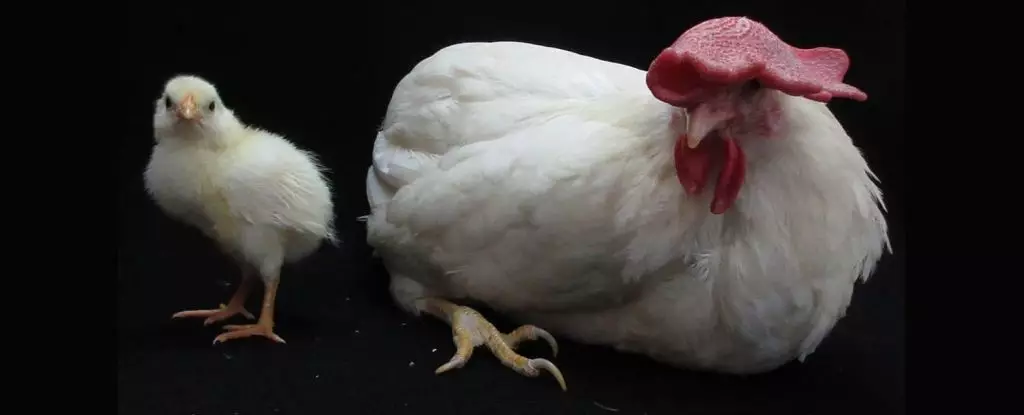The natural world is a tapestry of life forms engaging in intricate biological processes, with birds being one of the most captivating and diverse groups. As the closest living relatives to dinosaurs, they exhibit a remarkable range of adaptations that allow them to flourish across varied habitats. Yet, despite their prominence, the journey of avian development—from fertilization to hatching—has remained relatively enigmatic, obscured by the protective barrier of eggshells. Recently, significant strides have been made in avian developmental biology through the introduction of a revolutionary culturing system, enabling researchers to observe and nurture chicken embryos without the constraints of traditional eggshells.
The endeavor into shell-less culture systems (SLCS) has been a long-standing focal point for scientists eager to glean insights into avian embryogenesis. The new system developed by a dedicated research team supersedes earlier attempts, which were often fraught with complications and inconsistent results. Past methods required embryos to develop for three days in an eggshell before being transferred to an external culture medium, but the outcome was far from optimal; many embryos did not survive or developed deformities.
A breakthrough strategy employed by this current team hinged upon identifying and addressing a significant issue: the desiccation of the yolk vitelline membrane, which acts as a protective layer surrounding the blastoderm—the critical area of embryonic development. The drying out of this membrane posed a threat to the normal growth of the embryo and ultimately impacted hatching success. By implementing a rotary shaker to maintain a moist environment, researchers could establish a culture system that better mimicked natural conditions, thus facilitating healthier embryo development and higher hatching rates.
The refined SLCS involved meticulous adjustments, including varying shaking speeds—specifically 6, 10, and 28 rotations per minute—to pinpoint the most favorable conditions for embryonic survival. Each speed yielded distinct outcomes concerning survival rates and developmental integrity. Notably, at 6 rotations per minute, while the survival rate peaked, developmental delays were prevalent. Conversely, 10 rotations per minute struck an optimal balance, yielding a robust survival rate, albeit accompanied by some abnormalities in embryo development.
What stands out in this progression is the incorporation of supplemental oxygen at strategic intervals during development. Notably, the timing of oxygen application did not exhibit a significant impact on embryonic growth, suggesting that the essential factors for healthy development are multi-faceted and may extend beyond mere oxygenation.
Further experimentation involved the introduction of hand-shaking motions in conjunction with the established rotary shaking method. This combination proved fruitful, raising the hatching rate markedly from 3.3% to an impressive 10.5%. The successful hatching of chicks from this system heralds a new era in our capacity to study avian development, offering tangible evidence of viability through dissection that confirmed the normalcy of the chick’s anatomical structure.
This substantial enhancement in hatching rates and the assurance of developing chicks to maturity signifies a major leap forward. The transparent nature of the new SLCS allows for real-time observation of embryonic development, offering researchers unprecedented insights into how various experimental treatments can impact phenotypic outcomes throughout the incubation process.
The implications of this ground-breaking technology extend beyond poultry science. Understanding avian embryonic development in a controlled and observable manner could revolutionize fields such as developmental biology, veterinary medicine, and even conservation efforts for endangered bird species. The ability to monitor developing chicks in real-time offers potential applications in genetic research and breeding programs, paving the way for advancements in improving avian health and resilience.
Moreover, the techniques developed for a shell-less culture system could inspire analogous approaches in the embryonic studies of other egg-laying species, broadening the scope of our understanding of reproductive biology across the animal kingdom.
The effort to replace traditional eggshell incubation with a transparent shell-less culture system has yielded fruitful results, granting researchers a “window” into the critical stages of avian development. By overcoming previous limitations associated with embryo desiccation and ensuring a conducive environment for growth, scientists have set the stage for a new era of insights into avian biology. This innovation not only enriches our comprehension of growth and maturation processes in birds but also serves as a reminder of the continuous pursuit of knowledge in the ever-evolving field of life sciences.

Leave a Reply